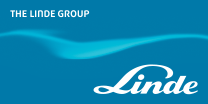
Andreas is a chemical engineer, holds a PhD in Chemical Thermodynamics and has been with Linde since 2007 at department IT of Process Design &Control. He works on physical property systems, with various simulation tools for modelling processes such a steam reformer, steam cracker, etc…
Andreas begins his presentation by briefly describing the LINDE group and its origins. Then he positions Linde Engineering and lists the core competencies of this division. Then he moves on to address CAPE-OPEN.
First he explains why Linde Engineering has chosen CAPE-OPEN and how it intends to make use of CAPE-OPEN.The main driver to the use of CAPE-OPEN is the increased cooperation it brings with customers and licensees. CAPE-OPEN enables to plug 3rd party Property Packages in any process simulator that Linde’s customers and licensees may use. Linde Engineering is focusing on Linde Thermodynamic server than needs to be plugged into a variety of process simulators.
Linde Thermodynamic server centers on GMPS software which has its own Material Object embedded (so it can be used as a PME) and which can be used in various PMEs. Tests were conducted with three different PMEs and five different PMCs. The conclusion drawn from these tests is that CAPE-OPEN is not really plug and play.
Linde Engineering has implemented version 1.0 of the CAPE-OPEN Thermodynamic and Physical Properties interface specification. This version leads to several issues such as the naming of phases. Also phase equilibrium calculations at phase boundaries do not set always the composition of the non-existing phase. It depends of the CAPE-OPEN implementation made by the 3rd party. The original definition of enthalpy in version 1.0 is also causing trouble since heats of formation are or are not included in the property value. Presence of the enthalpy property incorporating heats of formation is not systematic by far. Persistence of CAPE-OPEN Property Packages is either not provided by the Property Package or not supported by the PME. It induces problems especially when configuration files are used.
Other issues reported include memory leaks in some PME/PMC combinations, the point that not all PMCs support Vapor-Liquid-Liquid Equilibrium, an insufficient support of solid phases, the absence of a mandatory minimum set of properties supported by any CAPE-OPEN Property Package (fallback solutions have to be developed), longer calculation times.
This long list of issues does not mean that most of the times the interoperability with CAPE-OPEN did not work. It worked. However it does mean that CAPE-OPEN is not plug and play and it makes the case for a proper certification process for PMEs and PMCs.
